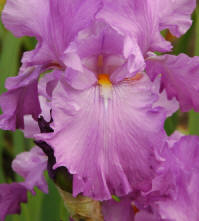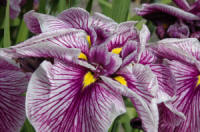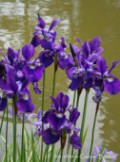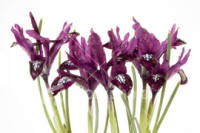The Iris group are mentioned in this section, in that some of them are grown from real bulbs, and others from Rhizomes.
They are a valuable addition to the 'bulb garden' in that the various types have different flowering periods. Together with that, the range of flower colours and the differing flowering heights and forms make them a versatile addition.
Bearded Irises.
The most spectacular of the Iris group is those in the Bearded Iris group. As can be seen from the image, they have a drooping petals - often mistakenly called beards. The term Bearded Iris actually comes from the fact that within the centre of the flower - and totally visible - you will see a 'beard' of white - sometimes coloured hairs.

This group grow from Rhizomes and should be planted in full sun and a light soil. They are normally planted as new plants with the Rhizomes just sitting on top of the soil where the sun can bake them - ensuring the best flowers.

Iris ensata - the Japanese Iris.
Iris ensata is becoming an increasingly popular competitor to the Bearded Irises - having a wide colour range and generally flattened flower heads. Their preferred habitat is damp soils - even edges of ponds.

Iris sibirica - The Siberian Irises.
Iris sibirica is for the damper places, or in the border - popping up through other - but not dense - plants. It will co-habit well with hostas.Flower held erect on narrow but sturdy stems in kid to late Spring.
Plants can be divided in late summer. Slugs are often a problem with this group of Irises.
Any transplanting - or planting of new plants - should be carried out in late summer. They should not be planted in winter months.

Iris reticulata. Dwarf Iris.
Iris reticulata - Dwarf Irises grow from bulbs and are the fist of the Iris group to flower in early Spring.